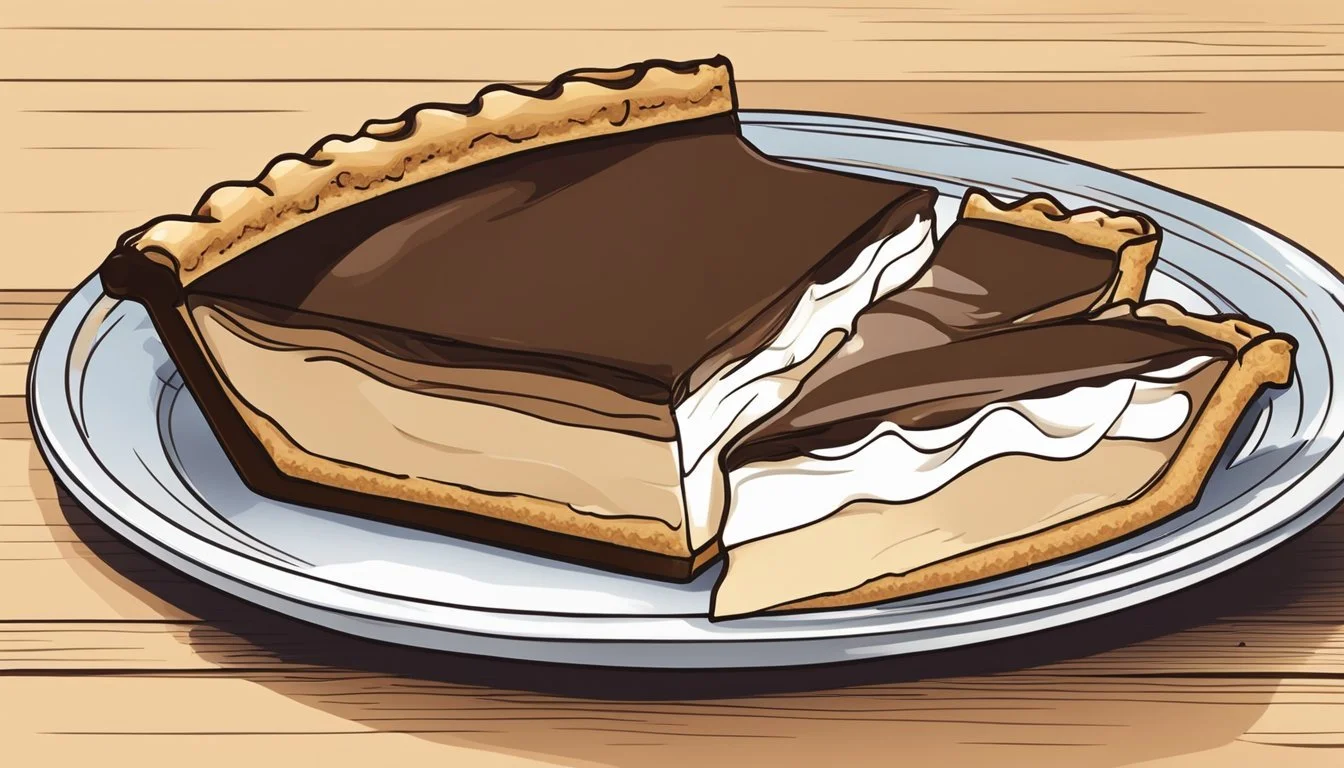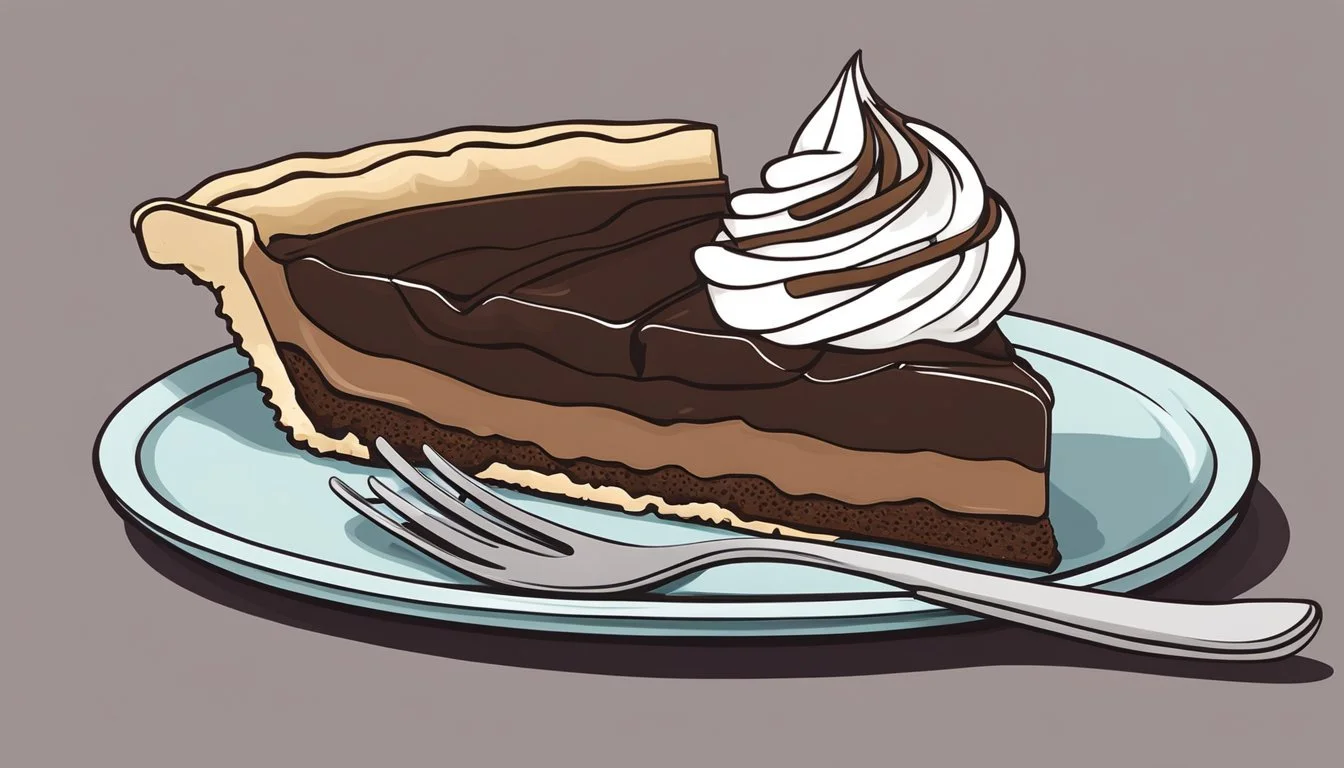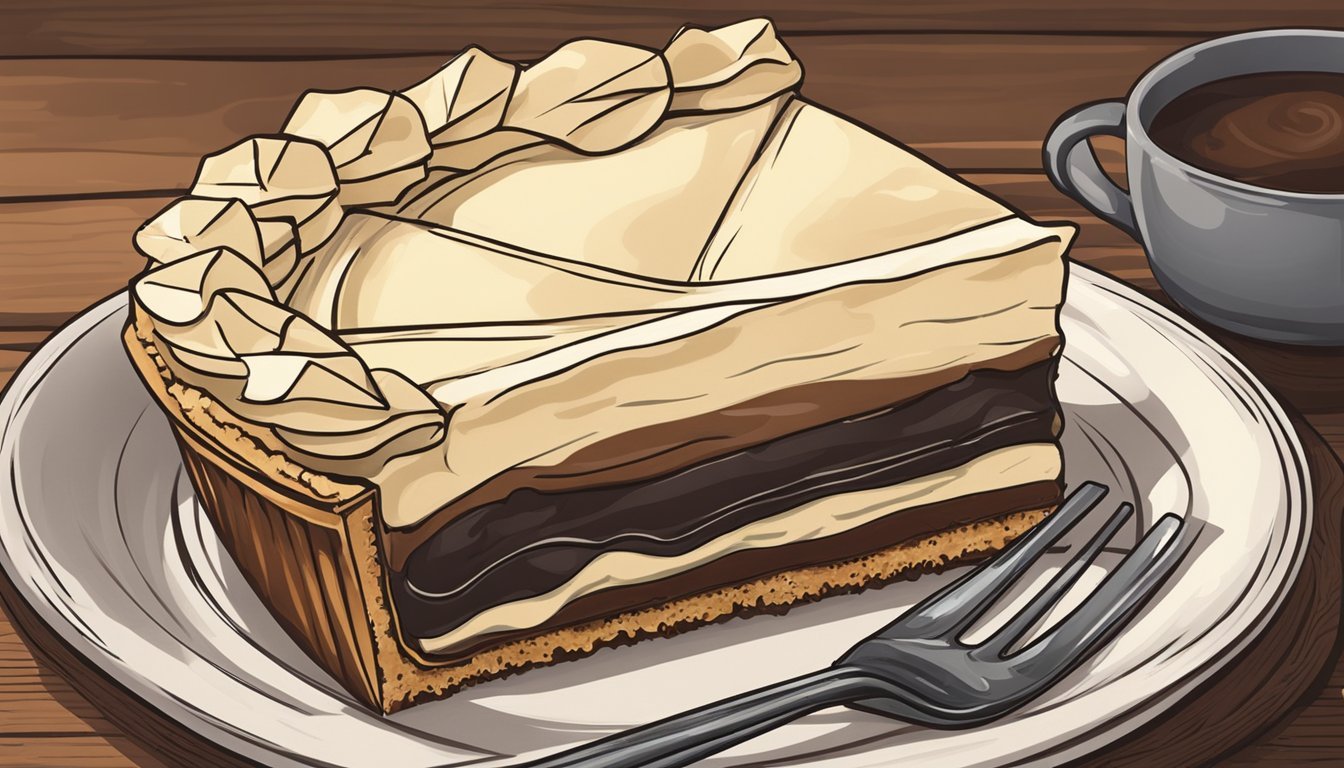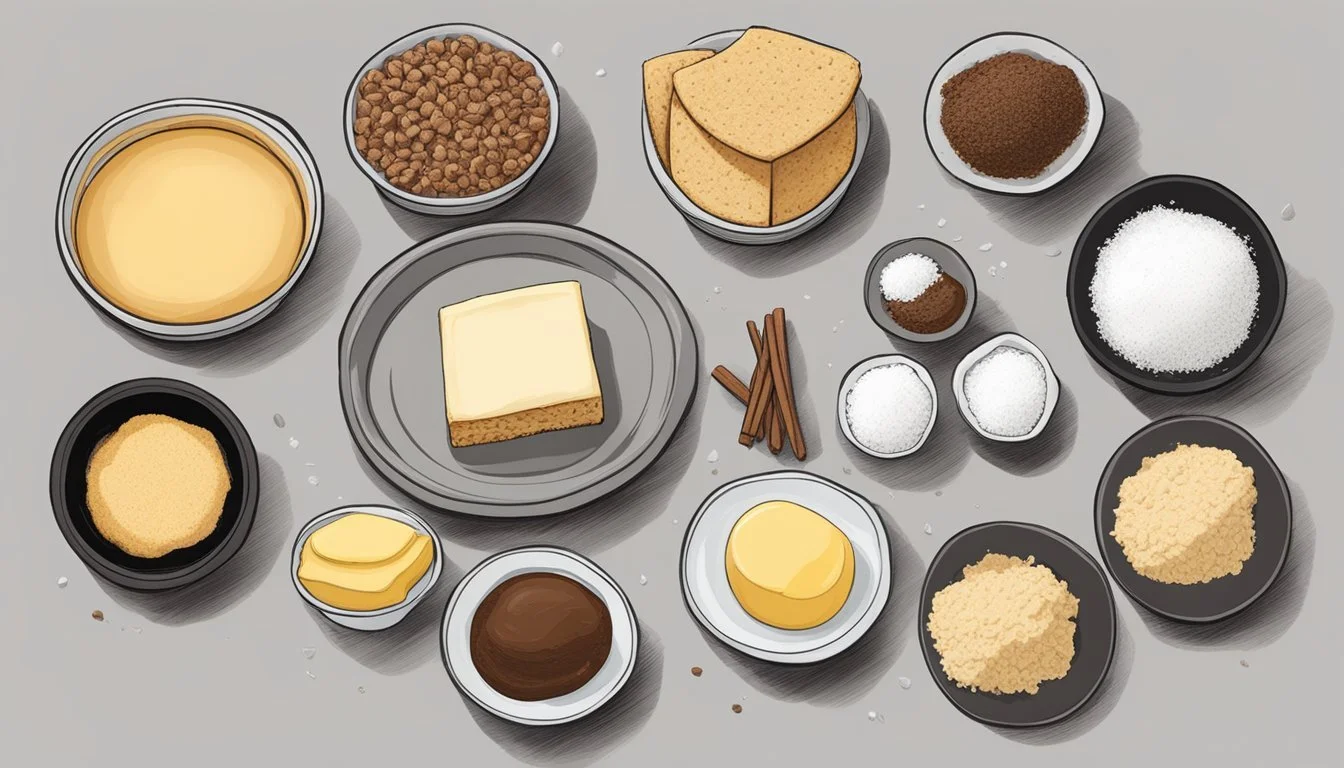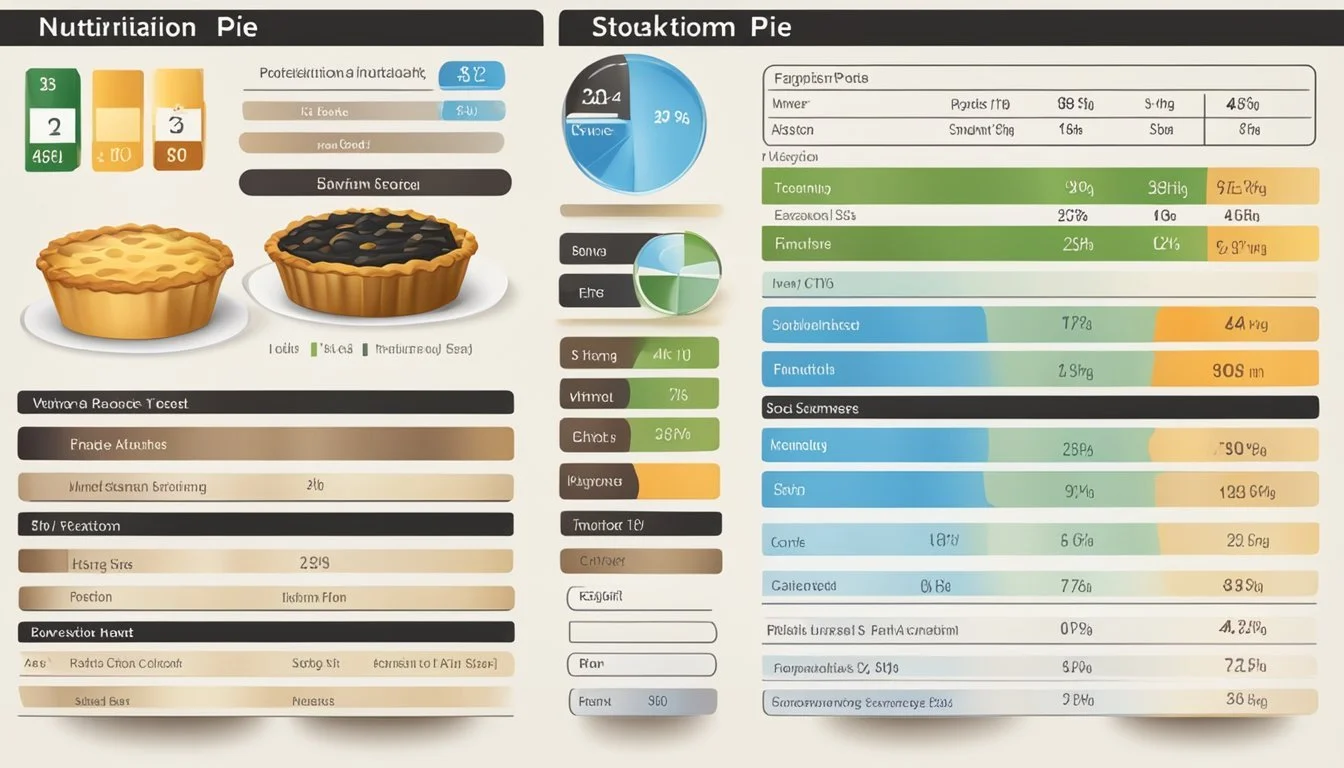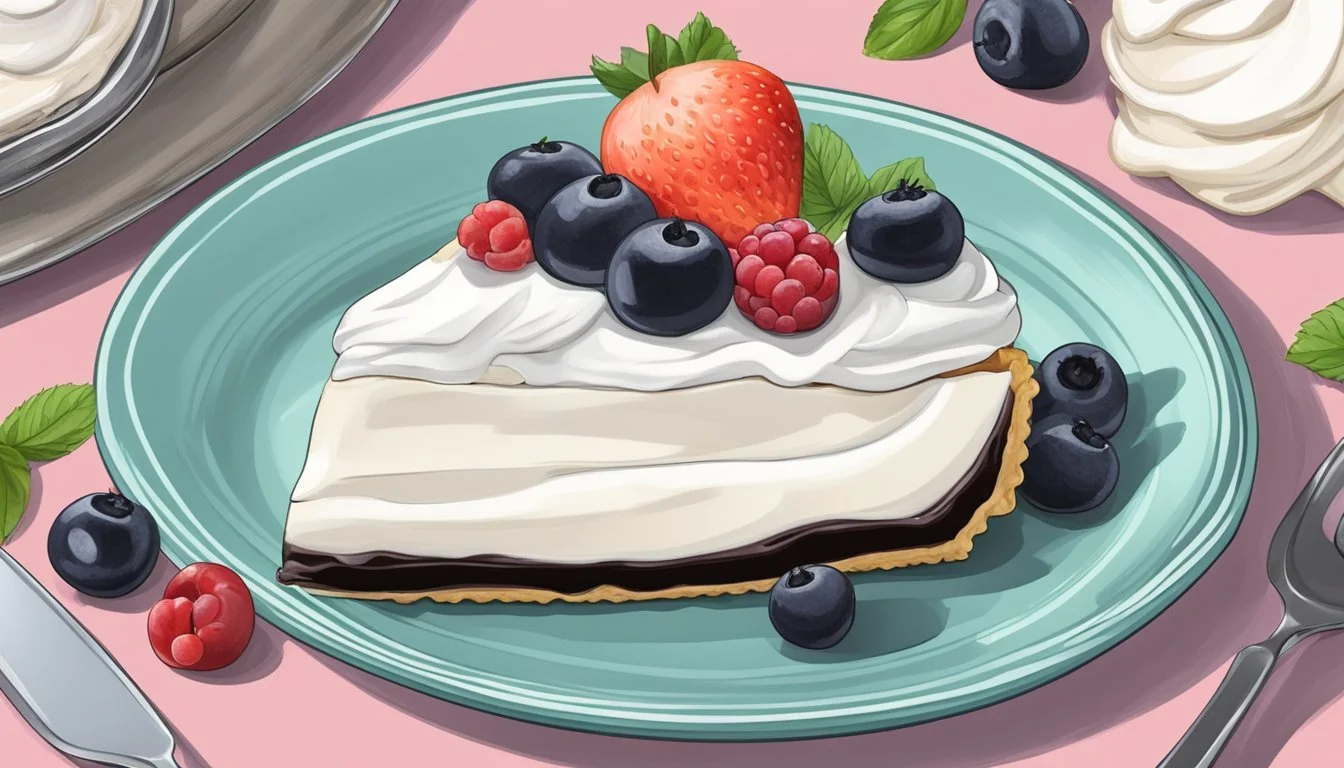Is Black Bottom Pie Vegan?
Unveiling the Dessert's Ingredients
Black bottom pie, traditionally a decadent dessert characterized by its chocolate (What wine goes well with chocolate?) layer at the base, often raises questions regarding its suitability for a vegan diet. The classic black bottom pie is not vegan, as it frequently incorporates butter, eggs, and milk chocolate, which are all animal-based products. However, the increasing demand and creativity in vegan baking have led to the adaptation of traditional recipes to suit plant-based preferences.
By substituting dairy milk with plant-based alternatives like almond or coconut milk and using vegan chocolate, this once non-vegan dessert can be transformed into a treat that aligns with vegan dietary restrictions. For instance, a vegan ganache for the pie's chocolate base can be made by melting vegan chocolate with a dairy milk substitute. The key is ensuring that all the ingredients used, from the crust to the filling, are derived from non-animal sources. Vegan versions of black bottom pie may also utilize ingredients such as agar-agar or cornstarch as thickeners in place of eggs.
Catering to a vegan diet, several adaptations and recipes of black bottom pie have surfaced, demonstrating that it is indeed possible to enjoy a vegan version of this indulgent dessert. Vegan bakers reimagine the pie using creative, plant-based ingredients, ensuring that the final product remains true to the essence of a lusciously rich black bottom pie. This inclusivity allows both traditional and modern bakers to produce versions that can be enjoyed by a wider audience, inclusive of those following a vegan lifestyle.
Understanding Veganism
Veganism is a dietary and lifestyle choice where individuals abstain from the use of animal products. It is a special diet that extends beyond food to exclude all forms of animal exploitation and cruelty in commodities such as clothing and other goods. This practice is rooted in ethical, environmental, and health concerns.
The core characteristics of a vegan diet include being dairy-free and egg-free, along with avoiding meat, fish, and poultry. Vegans opt for plant-based alternatives, focusing on fruits, vegetables, legumes, grains, nuts, and seeds. These dietary choices align with the vegan ethos of causing minimal harm to animals.
In the context of baked goods or desserts like "black bottom pie," ensuring that the ingredients are vegan involves sourcing plant-based substitutes for common non-vegan components. Key replacements include:
Plant-based milks (almond, soy, oat) instead of dairy milk
Vegan butter or oils in place of butter derived from animal milk
Agar-agar, fruit purees, or flaxseed meal as alternatives to eggs
To verify if a product or recipe is truly vegan, careful examination of all ingredients is vital. This scrutiny ensures compliance with vegan standards, maintaining a clear conscience for those following the diet due to ethical reasons. With the increasing availability of vegan products, adopting a vegan diet is more accessible than ever, though it still requires dedication and awareness.
Exploring Black Bottom Pie
Black bottom pie is a distinctive dessert that offers a rich, layered experience. Its characteristic feature is the black bottom, a layer of chocolate typically made from a ganache or a chocolate mixture. This layer sets the stage for the rest of the pie, contrasting the flavors and textures that come afterward.
Traditionally, the pie is not vegan due to the presence of dairy products and eggs. The black bottom layer often includes chocolate chips melted with dairy-based milk or cream. For the filling, a custard made from milk and egg yolks is common, as is the case with a chocolate cream pie.
However, substitutions can be made to create a vegan version of black bottom pie. Vegan ganache can be prepared using a milk alternative, such as coconut milk or a plant-based milk, combined with vegan chocolate. This step is crucial for the creation of the black bottom banana cream pie where the vegan ganache lays the foundation.
Pies of this variety may either be baked or set as a no bake option, depending on the recipe. Baking usually involves blind baking a crust before adding the fillings, whereas no-bake variations might simply require refrigeration. Here's a brief overview:
Black Bottom: Made with a vegan ganache or melted chocolate with a milk substitute.
Filling: Vegan fillings replace dairy and eggs with alternatives like plant-based milk and thickeners.
Preparation: Options include baking the crust or opting for a no-bake approach where the pie sets in the refrigerator.
In conclusion, transforming traditional black bottom pie into a vegan-friendly dessert involves replacing non-vegan ingredients with plant-based alternatives without compromising on the rich texture or flavor.
Ingredients Breakdown
When adapting the traditional black bottom pie to a vegan version, one must be meticulous in selecting ingredients that align with vegan standards, such as avoiding animal products, while aiming to replicate the texture and taste as closely as possible.
Traditional Ingredients
Traditional black bottom pie recipes often include items that are not vegan-friendly. These typically feature:
Eggs: Key for structure and custard base.
Heavy Cream: Provides creaminess to the filling.
Unsalted Butter: Usually in the crust for flakiness.
All-Purpose Flour: A common thickener and stabilizer.
Granulated Sugar: For sweetness in every layer.
Gelatin: Often used in mousse or custard-like layers.
Chocolate: Can be found in the pie filling. The variety used may vary, from unsweetened chocolate to cocoa.
Vegan Alternatives
Heeding vegan principles, substitutions must be made to exclude animal products:
Vegan Butter (like Earth Balance): Replaces unsalted butter to achieve a similar texture.
Coconut Milk, Almond Milk, Soy Milk: These can stand in for heavy cream.
Egg-Free Options: Tofu, banana, or commercial egg replacers can be used to mimic the binding properties of eggs.
Agar-Agar: Plant-based gelatin substitute derived from seaweed.
Potential Vegan Substitutes
For a successful vegan adaptation, here are potential substitutes for traditional ingredients:
Ingredient Vegan Substitute Eggs Silken tofu, commercial egg replacer Heavy Cream Coconut, almond, or soy milk Unsalted Butter Vegan butter, coconut oil Gelatin Agar-agar, cornstarch Granulated Sugar Coconut sugar, other plant-based sweeteners Chocolate Dairy-free chocolate or cocoa
To finalize the conversion, one can top the pie with coconut whipped cream and choose gluten-free or nut-free options according to dietary needs. Ensuring all chocolate used is dairy-free and any crust or filler is devoid of all animal products will result in a vegan pie that doesn't compromise on the essence of the classic.
Pie Preparation
In creating a black bottom vegan pie, special attention must be given to each step, ensuring that vegan alternatives are used without compromising texture or flavor. The preparation hinges on a solid crust foundation, delicate filling techniques, and precise cooking procedures.
Crust Creation
Recipe Essentials: Most vegan pie crusts use a combination of flour, solid fat, and cold water, which are pulsed together in a food processor for consistency. For a black bottom, chocolate cookie crust is favored for its rich flavor and no-bake convenience.
Materials: Food processor, pie plate, rolling pin
Procedure: Pulse the ingredients until a crumbly dough forms, roll it out, and then press into a pie plate. For a baked crust, preheat the oven to 375 degrees F and blind bake using pie weights, for about 15-20 minutes, or until edges are golden.
Tips: Keep all ingredients cold for a flakier crust and ensure to poke holes (docking) with a fork before baking to prevent puffing.
Filling Techniques
Ganache & Custard: Both ganache and vanilla custard fillings start with heating liquid and melting in chocolate or blending in custard ingredients, respectively, using a saucepan and continual stirring to prevent burning.
Ganache: Melt vegan chocolate with a milk alternative, like almond or coconut milk, and pour over the cooled crust to set as the black bottom layer.
Vanilla Custard: For a vanilla custard, combine plant milk with thickening agents and flavorings, cooking until it reaches a pudding-like consistency.
Cooking Procedures
Baking Time & Finalizing Pies: Whether the pie is no-bake or requires baking, knowing the proper baking time is essential.
No Bake: For a no-bake pie, after adding the ganache or custard, refrigerate the pie until set, typically for a few hours up to overnight.
Bake: If the recipe calls for baking, set the oven to the specified temperature, often around 325 degrees F for custard-based fillings, and bake until set. Always allow the pie to cool on a wire rack to room temperature before serving. Total time from preparation to serving can vary, but baking usually requires an additional 45-60 minutes.
Nutritional Information
A typical serving of black bottom pie, which includes both a chocolate base and a flavored top layer, contains varying amounts of calories and nutrition depending on its size and specific ingredients. When making a vegan version, substitutions affect these values, but fundamental components can confer a general nutritional understanding.
The chocolate base of a vegan black bottom pie often uses unsweetened chocolate to reduce sugar content. Unsweetened chocolate primarily consists of cocoa solids and cocoa butter, providing an energy-dense source of calories, fat, and antioxidants. However, when unsweetened chocolate is replaced with sweetened alternatives or chocolate chips, the pie's sugar content can rise considerably.
For the pie's crust or filling, almonds may be incorporated, either as flour, slices, or almond milk. Almonds contribute monounsaturated fats, protein, fiber, and essential vitamins and minerals. These additions can enhance nutritional value while keeping the overall dish plant-based.
Nutritional components in a typical serving of a vegan black bottom pie may include:
Calories: Varied, generally from 200 to 500 kcal per slice.
Fats: Includes heart-healthy fats from nuts and cocoa butter.
Protein: Moderate, often supplemented by almond content.
Carbohydrates: High, as it includes sugar sources and crust ingredients.
Fibre: Present from nuts and whole-grain flours if used.
Sugars: Ranges widely, particularly if sweetened chocolate or added sweeteners are used.
It's important to consult the recipe for precise measurements. Each ingredient contributes to the final pie's caloric and nutritional makeup, and vegan recipes may differ substantially from their non-vegan counterparts.
Serving and Storage
When serving a black bottom pie, it's recommended to keep the portions appropriate, generally cutting the pie into 8 to 10 slices. This ensures that each serving has a balanced ratio of the chocolate base, filling, and any toppings. For the best texture and taste, the pie should be served chilled. Place the pie into the refrigerator at least a few hours before serving to allow the pie to set properly.
Storage Tips:
Keep the pie in a pie plate or appropriate storage container with a lid.
To maintain freshness, cover the pie with plastic wrap or aluminum foil before placing it in the refrigerator.
The pie can be stored in the refrigerator for up to 3-4 days.
For longer storage, consider portioning the pie and freezing it. Use an airtight container suitable for freezer storage.
Please note: Freezing the pie may alter its texture slightly, but it will maintain most of its flavor when thawed in the refrigerator before serving.
The following table summarizes key storage information:
Condition Container Duration Chilled Pie plate with lid or covered securely 3-4 days Frozen (if applicable) Airtight container 1-2 months
When ready to enjoy your pie after storage, ensure it is thawed gently in the refrigerator if it was frozen. Serve the pie chilled for optimal flavor and texture.
Special Dietary Considerations
When adapting a black bottom pie to fit vegan and other special diets, it's important to consider alternative ingredients to ensure the recipe remains aligned with dietary restrictions. Key aspects include gluten-free crust options, nut-free fillings, and sugar alternatives for sweetness.
Gluten-Free Options
For those requiring a gluten-free diet, a black bottom pie can include a crust made from gluten-free ingredients. A popular choice is almond flour or a blend of gluten-free flours. The crust can also be made from rolled oats, which are naturally gluten-free, however, one should ensure they are labeled as such since cross-contamination with gluten-containing grains is common.
Nut-Free Choices
A black bottom pie typically involves a chocolatey layer which may contain nuts in some recipes. To cater to a nut-free diet, one can use seed-based spreads like sunflower butter as an alternative to nut butters, ensuring the rich flavor is preserved without the allergens. For the crust, replacing almond flour with an equivalent amount of gluten-free or regular flour suitable for those with nut allergies is recommended.
Sugar Alternatives
For those on a sugar-free diet or looking to reduce their sugar intake, sweetening a vegan black bottom pie with natural sugar alternatives like stevia, erythritol, or monk fruit can be an excellent option. These alternatives allow for the desired sweetness without the use of conventional sugar, which is particularly beneficial for diabetics or those following a low-carb diet.
Additional Variations
When modifying a black bottom pie to fit a vegan diet, there are numerous ways to play with flavors and toppings. These variations allow for a personalized touch while maintaining the integrity of the classic dessert.
Flavor Variations
Vegan black bottom pie traditionally features a chocolate layer, which can be enhanced or changed according to personal taste. To infuse different flavors into the pie without compromising its vegan status:
Chocolate Base: Use a high-quality vegan dark chocolate for a rich and intense flavor. For a less intense chocolate flavor, vegan milk chocolate is an option. Incorporating a small amount of cocoa powder can also deepen the chocolate experience.
Vanilla Accent: Add a hint of vanilla extract to the chocolate base to complement its richness or to the creamy top layer for a classic flavor profile.
Nut Butter: Swirl in a vegan nut butter such as almond or cashew to the chocolate base for a nuanced, nutty flavor. Ensure that the nut butter is well-incorporated to prevent separation.
Decoration and Toppings
Enhancing the visual appeal and taste of a vegan black bottom pie can be achieved by selecting the right decorations and toppings:
Whipped Cream: Dollop vegan whipped cream on top of the pie before serving for added creaminess and aesthetic appeal. Whether homemade or store-bought, ensure it is dairy-free.
Chocolate Shavings: Garnish with delicate shavings of vegan chocolate for texture and a hint of elegance. Choose a contrasting chocolate type (e.g., vegan white chocolate on a dark chocolate base) for visual impact.
Fruit Garnish: Brighten the pie with fresh fruit such as raspberries or sliced strawberries. They offer a refreshing counterpoint to the rich chocolate.
Cocoa Dusting: A light dusting of cocoa powder can add a subtle chocolatey layer and a professional touch to the presentation.
These variations allow anyone to customize their vegan black bottom pie, making it a dessert that appeals to a range of tastes while staying true to its vegan roots.
Common Questions Addressed
When it comes to black bottom pie, one frequent query is: "Is it vegan?" Traditionally, this dessert is not vegan, as it often contains dairy and eggs. However, it can be adapted using plant-based ingredients. Below are some commonly asked questions addressed to clarify misconceptions and provide baking insights regarding vegan black bottom pie.
Ingredients Substitution
Dairy: Replace dairy milk with plant milk, such as almond or soy, and use vegan chocolate for the ganache.
Butter: Use plant-based margarine or solidified coconut oil in the crust.
Eggs: In custards, silken tofu or cornstarch can serve as thickening agents instead of eggs.
Baking Tips
Blind Baking: This is the process of pre-baking the crust before adding fillings. Use pie weights or dry beans to prevent puffing.
Ganache Texture: To achieve smooth vegan ganache, stir the chocolate and plant milk constantly over low heat until fully melted.
Pie Doubts
Flavor: Vegan black bottom pies can be as flavorful as traditional versions. Infuse the ganache with vanilla extract or orange zest for an extra kick.
Texture: Vegan custards might seem different at first. Patience is key—allowing the pie to set completely results in a desirable consistency.
For those exploring vegan questions, they need not worry about compromising on taste or texture when baking a vegan black bottom pie. With the right substitutes and methods, they can enjoy this indulgent treat while adhering to their dietary choices.
Conclusion
The adaptability of black bottom pie recipes caters well to vegan dietary preferences. Traditional recipes that include dairy and eggs can be modified using plant-based alternatives without compromising on taste or texture. Coconut milk, a common ingredient in the vegan versions, offers a rich creaminess, while plant-based butter and milk alternatives serve as direct substitutes in crust and ganache preparation.
Numerous recipes highlight the ease with which a vegan black bottom pie can be achieved. The crust, whether made from scratch or store-bought, can be effortlessly blind baked and can include ingredients like cookie crumbs bound with plant-based butter. The filling often utilizes vegan chocolate to create a decadent black bottom layer, demonstrating the seamless incorporation of vegan ingredients.
Despite these straightforward substitutions, attention to detail is key to ensure each component sets correctly and satisfies even the most discerning palates. The presence of vegan recipes specifically for black bottom pie is an encouraging sign that popular desserts can maintain their appeal without animal products.
Those who wish to indulge in a black bottom pie while adhering to a vegan lifestyle can be assured that there is a plethora of recipes available. These recipes cleverly mimic the texture and richness associated with the original through the judicious use of vegan ingredients, allowing for an enjoyable dessert experience.

